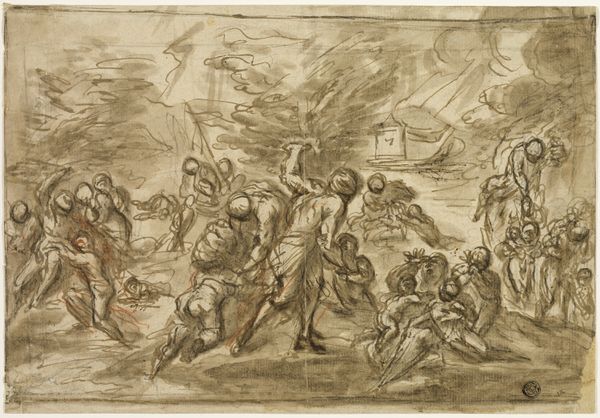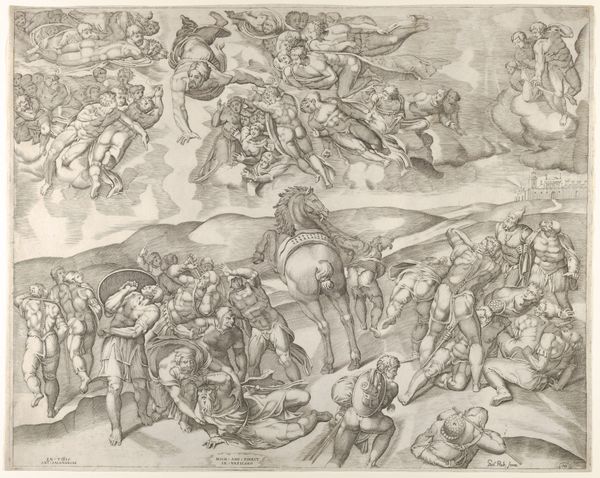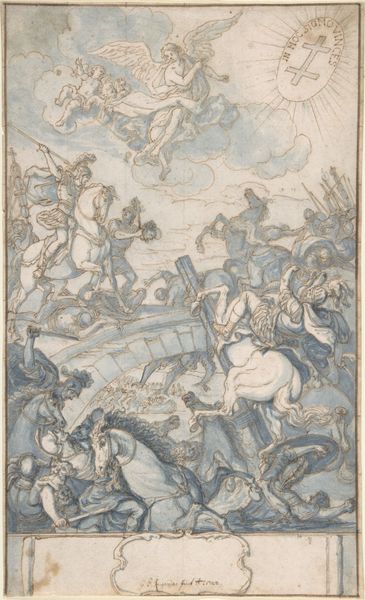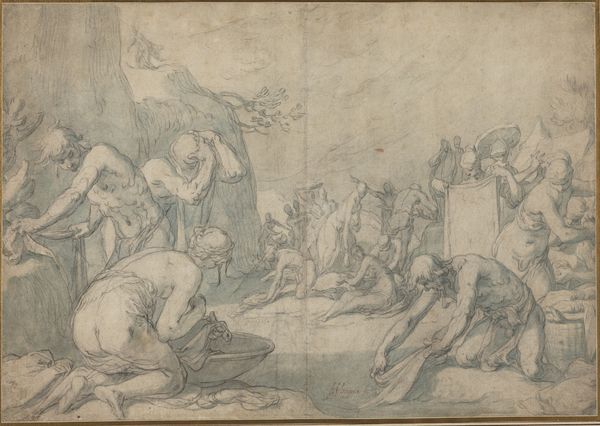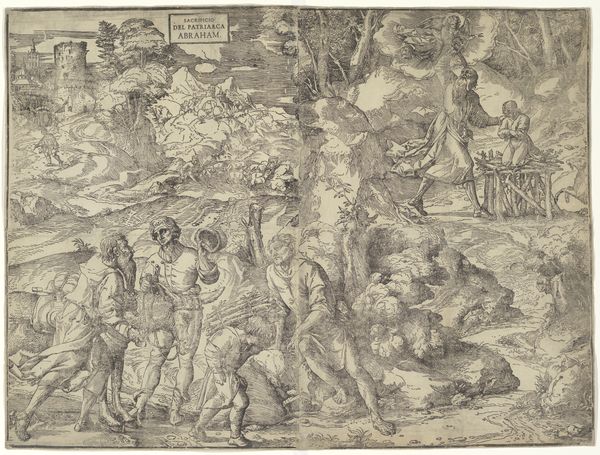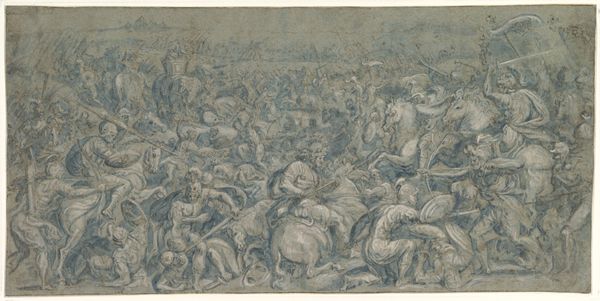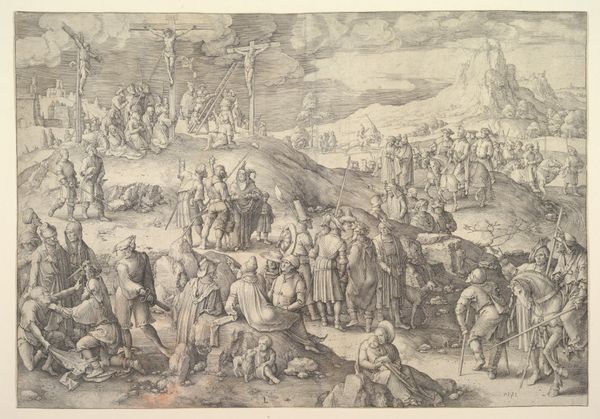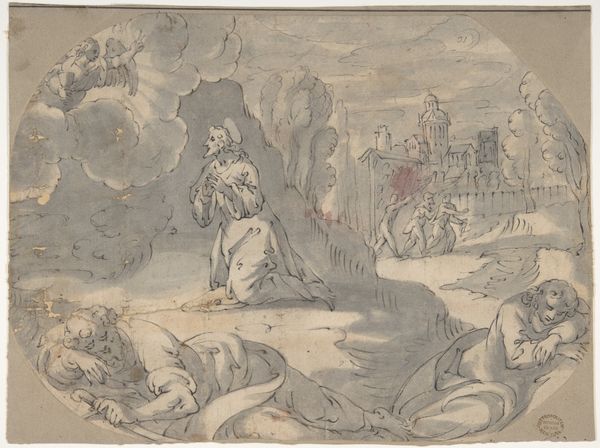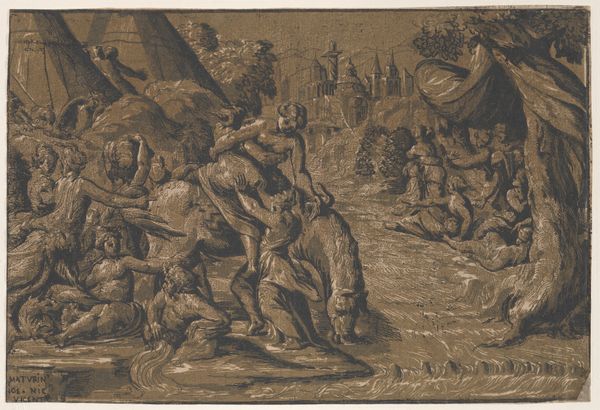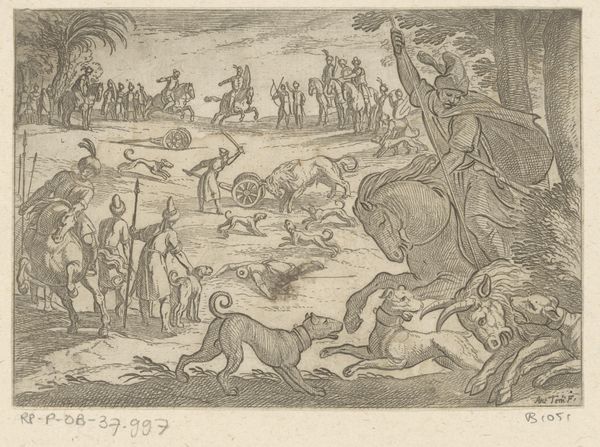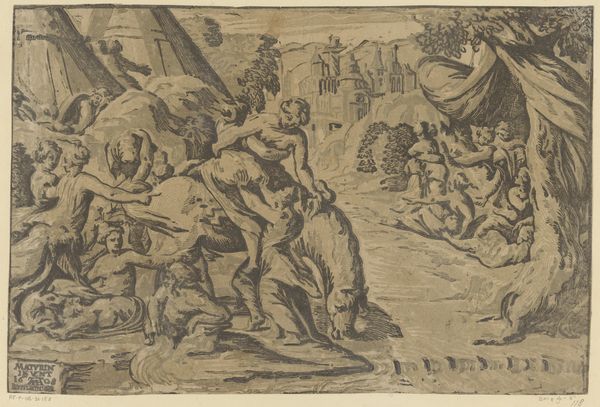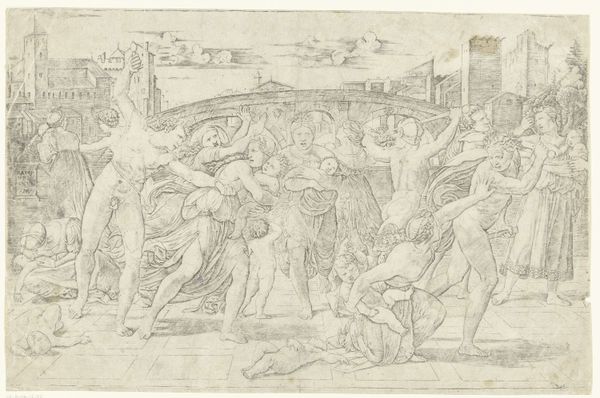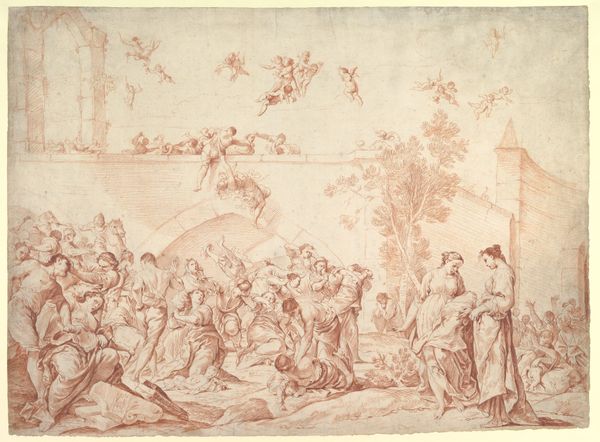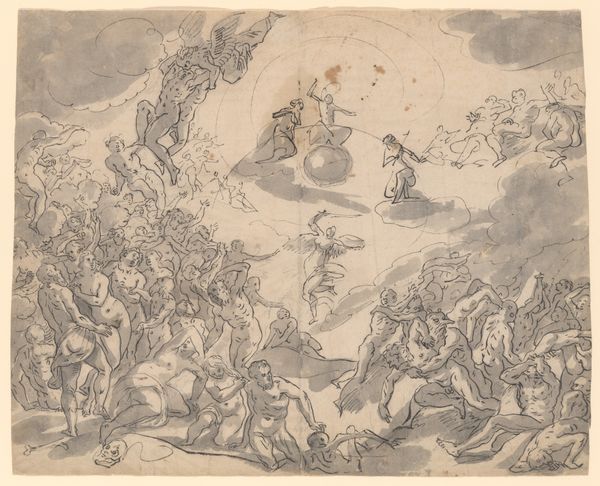
drawing, print, paper, ink
#
drawing
#
ink painting
# print
#
landscape
#
figuration
#
paper
#
11_renaissance
#
ink
#
horse
#
genre-painting
#
history-painting
Dimensions: sheet: 9 1/16 x 13 in. (23 x 33 cm)
Copyright: Public Domain
Editor: We’re looking at “The Conversion of St. Paul,” a pen and ink drawing by Melchior Bocksberger, made sometime between 1530 and 1587. It’s a whirlwind of figures and horses. There's so much chaotic energy, almost like the artist captured a moment of pure disruption. What is your initial impression of its composition? Curator: The disruption you mention is cleverly articulated through dynamic lines and spatial compression. Consider the foreground: the fallen figure and rearing horse establish a powerful diagonal thrust. The use of layering and crowding obscures a clear sense of depth. Bocksberger juxtaposes frenetic foreground activity with a calmer, receding landscape, generating a formal tension. Do you see how this visual imbalance contributes to the sense of drama? Editor: Yes, it's like the artist is deliberately avoiding a clear focal point, keeping the viewer's eye constantly moving. How do the material qualities of the ink drawing play into your formal reading of the work? Curator: Precisely! The fluidity of the ink allows for gestural mark-making. Note the expressive lines suggesting movement and light. Bocksberger contrasts delicate hatching in the background with bold, contouring lines in the foreground figures. The monochrome palette focuses our attention on form and tonal variation rather than coloristic concerns. The medium's inherent capacity for both precision and spontaneity effectively mirrors the narrative's theme of sudden revelation. Editor: I see, the technique echoes the narrative! It’s less about depicting an event realistically, and more about visually embodying its disruptive nature. I’m walking away seeing much more than just figures on paper! Curator: Indeed. Through focused attention on its intrinsic visual language, Bocksberger's drawing offers us not simply a scene, but a concentrated meditation on transformation.
Comments
No comments
Be the first to comment and join the conversation on the ultimate creative platform.
